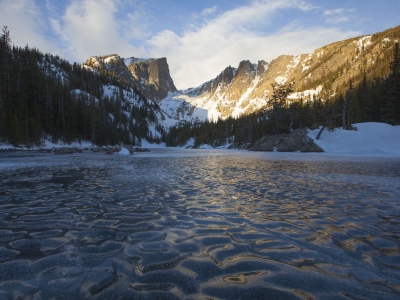
The Rocky Mountains or the Rockies are North America’s largest mountain range that runs through the western part of the continent. Spanning the countries of Canada and the U.S., the Rockies stretch for more than 4,500 km from British Columbia (in Canada) to New Mexico (in the U.S.). Some of the highest peaks of the continent lie within this mountain range. National parks and forest land protect most part of the region. Considering that the mountain range actually stretches to nearly 5,000 km spanning two large countries, there’s a lot of variation in the landforms, soil types, and even rocks within the areas. However, the mountains also have much in common in terms of high elevations, spectacular scenery, climate patterns, and most importantly, biogeography – the distribution of animals and plants in this expansive region. The Rockies are also significant because it is a “continental divide” – a natural boundary that separates various river systems within North America.
Wildlife
Depending on the elevation and location, the Rocky Mountains offer a spectacular variety of vegetation from aspen, pine, and fir to willows and low-flowering plants, all, in turn, supporting different kinds of wildlife. The mountain lion, mountain goat, bighorn sheep, brown and grizzly bear, in addition to caribou, elk, moose, white-tailed deer, and in some parts, bison can all be spotted here. Smaller animals include beavers, otters, squirrels, chipmunks, ferrets, and marmots, while amphibians comprise frogs, toads, salamanders, and similar species indigenous to the region. The Rocky Mountains are believed to nurture nearly 300 species of birds, including varieties of geese, swans, quails, pheasants, grouse, grebes, pelicans. cormorants, bitterns, herons, ibises, vultures, eagles, hawks, kites, falcons, coots, cranes, plovers, stilts, avocets, sandpipers, gulls, terns, pigeons, doves, cuckoos, owls, swifts, hummingbirds, kingfishers, woodpeckers, flycatchers, nuthatches, magpies, larks, swallows, wrens, thrushes, mockingbirds, starlings, pipits, warblers, sparrows, finches, and many more.
Threats
- Expectedly, climate change is impacting the region. However, there are three telling ways in which it affects the region, especially places such as the Rocky Mountain National Park that falls within the mountain range. One, climate change has increased the incidence of wildfires in the region. Just a few years ago, one such fire burned for months and over snow. Over the years, the fires have been lasting longer than usual, which means, they are also destroying more area then earlier.
- Two, cheatgrass, an invasive species, thrives in increasing temperatures. Increasing temperatures a result of climate change- is only helping the spurt in the growth of cheatgrass. Earlier found in lower elevations, it is said that this non-native species has moved up over 2,000 feet in a matter of just 10 years. Invasive species dominate native species, and can even lead to the extinction of the latter.
- Third, bark beetle outbreaks. Drier, hotter conditions increase the severity of bark beetle infestations. Trees on millions of acres in the region are killed by the beetles and they fall to the ground. Increasing infestations mean that even iconic, endemic and rare varieties of trees are under great threat. And all these three are inter-related problems – cheatgrass and trees killed by bark beetle increase the chance and spread of wildfires
- Not just climate change, there are other factors of worry too for the mountain range. Several aspects such as excessive tourism, timber harvesting, grazing, oil exploration, and mining have resulted in a general degradation of the region and a shrinking habitat for its renowned wildlife.
Picture Credit : Google



